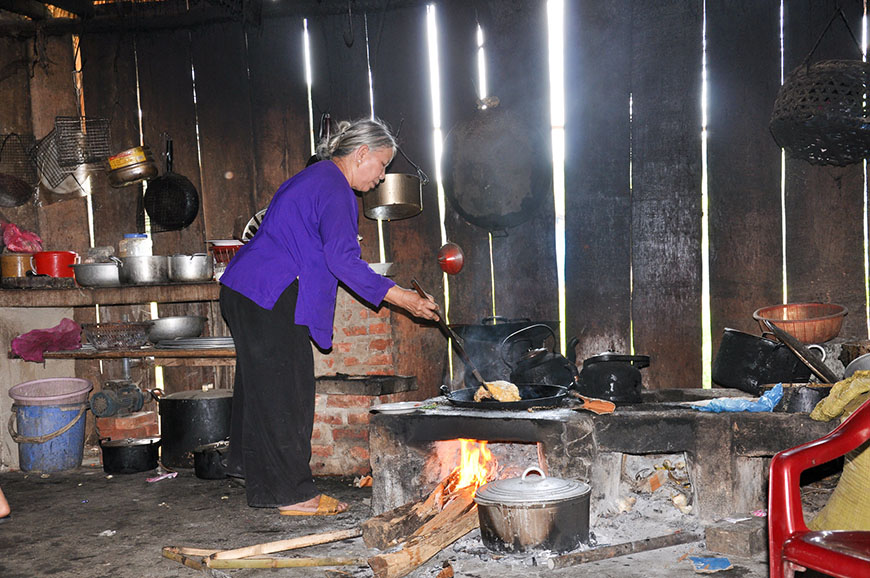Traditional Tay Nha San, still under construction - Mr Linh's Adventures
In the heart of the spectacular landscapes of north-east Vietnam, where limestone mountains meet the peaceful waters of
Ba Be lake, lies an architectural and cultural treasure: the stilt houses of the Tay ethnic group. Far from being mere dwellings, these “Nha San” are an ingenious response to a singular environment and the reflection of a philosophy of life deeply rooted in nature and respect for ancestors.
What is a house on stilts?
A stilt house is an all-wood construction perched above the ground on sturdy stilts. This elevation, from fifty centimetres to two metres, is not simply an aesthetic choice. It is a wise protection against humidity, floods and wild animals, but also, for some, a symbolic separation between the world of men and that of spirits. Each element has its own meaning: the stilts represent the connection to mother earth, the foundation of the family.

Nothing but wood! Preserving a precious heritage - Mr Linh's Adventures
Architectural features of stilt houses
Access to the Tay house is often marked by a single staircase. Among the Tay, it traditionally has nine steps - a number that brings good luck, prosperity and fertility. Climbing these steps without a misstep is a sign of good fortune. More than just a passageway, the staircase bears witness to the stages of life, from childhood to adulthood, and even to the departure of the bride in a symbolic ceremony. It also plays a role in rituals designed to call back lost souls.
Inside, the Tay house is organized around open spaces, inviting community life. At its heart, the ancestral altar is the spiritual heart of the home, a sacred place where past generations are honoured and an essential link maintained with them. Equally vital, the kitchen hearth is much more than a place to prepare meals. It's the soul of the home, a source of warmth, light and conviviality, where the genie of fire sits, a guarantor of good fortune and abundance.

Fire place, the heart of a Tay stilt house - Mr Linh's Adventures
Building materials and techniques
With the Tày family, nails and cement are out of the question. Nothing but wood! The construction of these houses is based on remarkable ancestral know-how. No nails or cement! The wooden parts, often made from ironwood renowned for its strength, are assembled with astonishing precision using a system of tenons and mortises, a guarantee of robustness and flexibility. Steeply pitched roofs, designed for good drainage, are traditionally covered with latanier leaves or thatch, a task often carried out collectively, strengthening community ties.
The Tay of the Ba Be region
The Tay of the Ba Be region, particularly in villages such as Pac Ngoi, proudly perpetuate these traditions. Their houses, harmoniously integrated into the landscape, bear witness to man's adaptation to his environment. While the general architecture follows Tay principles, it's their location in the heart of this exceptional natural site that makes them so special. In these villages, where rice-growing and fishing punctuate daily life, the houses on stilts embody an ancestral art of living that is still very much alive. Some even open their doors to visitors, offering a unique immersion into the heart of this fascinating culture.
In Kim Hy, in Bac Kan province, this preservation is particularly notable, with century-old houses still standing, guardians of the soul of the Tay people. They are a reminder that these houses are much more than structures: they are the beating heart of an identity, a tangible link between past, present and future, a precious heritage to be preserved.

A Tay stilt house in Bac Kan - Collected
Reflecting a strong cultural identity
The stilt houses of the Tay are an architectural and cultural heritage that reflects the ingenious adaptation to the mountain environment of North Vietnam, the community life and spiritual values of this ethnic group. Their solid wood construction, without nails, and their open layout with a central altar illustrate an ancestral art of living still alive and well, particularly among the Tay of Ba Be.